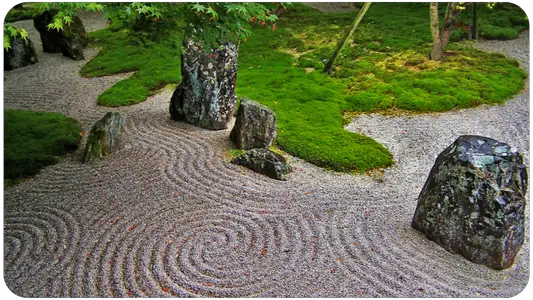Sarnath, in Hindi सारनाथ (Sārnāth), is a Buddhist city located about ten kilometers north of Varanasi in the Indian state of Uttar Pradesh. It is the site of the Buddha's first sermon and is therefore one of the four holy places of Buddhism1.
History
As sadhus in India still do today, the Buddha did not travel during the monsoon or vassa season and so he stayed in Sarnath during the monsoon season, taking shelter in the Mulagandhakuti Vihara, in fact a hut where he used to reside during his stays in Sarnath.
The Sangha having reached the number of 60 people, the Buddha dispersed it so that it spreads the Dharma.
Sarnath became a major Buddhist center of the Sammatiya school, an early nikaya of Hīnayāna Buddhism. However, representations of Heruka and Tara have been found in Sarnath, suggesting that Vajrayana Buddhism was also practiced or taught there.
Local rajas and wealthy merchants based in Varanasi played an important role in the development of Buddhism in Sarnath. By the second century, it had become an important artistic center which reached its zenith during the Gupta period (fourth to fifth centuries).
During his visit to Sarnath during the reign of Chandragupta II, the Chinese Buddhist pilgrim Faxian discovered four stupas and two monasteries. Later in the 6th century, Xuanzang counted 30 monasteries and 3,000 monks there.
The site continued to flourish under the Pala dynasty before being hit in 1026 by the Afghan raider Mahmud of Ghazni during one of his 17 raids in northern India.
The Dharmachakrajina Vihara is the last great monastery erected on the site, a construction sponsored by the wife Kumardevi of the raja of the principality of Benares, Govindachandra of the Gahadavala dynasty, who ruled from 1114 to 1154.
The site was razed by the Sultan of Delhi Qutb ud-Din Aibak in 1194 and became inactive with the near disappearance of Buddhism from Indian soil. It then fell into oblivion for six centuries until 1794, when Jagat Singh, the divan of the raja of Benares, recovered bricks from the Dharmarajika Stupa to use them as building material.
In 1798, Jonathan Duncan, the English resident in Benares reported the discovery of a green marble box contained in a stone chest unearthed during work on the stupa, leading to interest in the site.
The box that had been removed from the site, unlike the chest that Sir Alexander Cunningham found in place in 1835, contained bone fragments, pearls, rubies and gold and has now disappeared with its contents.
The empty stone chest was sent to the Bengal Asiatic Society by Cunningham and is now part of the collections of the Indian Museum in Calcutta.
Following the discovery of Jagat Singh, Sarnath became an excavation site for treasure seekers. In 1815, the first official excavations were carried out under the direction of Colonel C. Mackenzie. Those of Cunningham followed in 1835-1836 which brought to light a monastery.
In 1851-1852, Major Kittoe, who occupied the post of Archaeological Enquirer, revealed several stupas and a monastery, then in 1904-1905, F. C. Gertel found the main sanctuary and the pillar of Asoka with its famous capital with lions, as well as numerous sculptures and inscriptions.
Other excavation campaigns at Sarnath include those of C. Horne (1865), Sir John Marshall (1907), H. Hargreaves (1914-1915) and Daya Ram Sahni (1927-1932).
It was a Sinhalese Buddhist, Anagarika Dharmapala, who was the architect of the restoration of the monuments of Sarnath, which were, at that time, in a great state of dilapidation and abandonment.
Through his writings and speeches, he pleaded for the rehabilitation of Sarnath and raised funds from prosperous Indians and Westerners. He also initiated the construction of the Mulagandhakuti Vihâra - a Buddhist temple which was built there in 1931.
Heritage
The site, composed of ruins of buildings built between the reigns of Ashoka and Akbar, also includes an interesting museum that exhibits sculptures, both Hindu and Buddhist, taken from the site during excavations.
In the surrounding area, nations with large Buddhist populations have built temples in their national styles (temples from Burma, China, Korea, Japan and Thailand, as well as three Tibetan temples).
All the ancient buildings in Sarnath were ransacked by the Muslims. Notable ruins include:
the Dhamek Stupa, whose original structure dates from the first and second centuries. The cylindrical building was remodeled and enlarged in the 6th century. Made of bricks, it is still today about 35 meters high and about thirty meters in diameter.
It is decorated with friezes and niches. Its base is however built out of stones and its cohesion is ensured by iron spikes.
The Dharmarajika Stupa is one of the rare stapas dating from the time of Ashoka, only its foundations remain after its looting by Jagat Singh.
The ruins of the Mulagandhakuti Vihara indicate the place where the Buddha spent his first monsoon while to the east one finds the modern building of the same name, decorated with frescoes of the Japanese painter Kosetsu Nosu.
the Chaukhandi Stupa, erected according to the tradition at the place of the meeting of the Buddha and Bhadravargiya, and on which Akbar made raise an octagonal tower in memory of his father Humayun.
The long-broken Ashoka pillar still stands. The capital with the lions, today emblem of the country, did not suffer from its fall of about fifteen meters. It is exposed in the archaeological museum.
Moreover, one finds on the site:
a pipal tree planted by Anagarika Dharmapala from a branch of the Bodhgaya tree,
a museum, the oldest managed by the Archaeological Survey of India. Built on the initiative of Sir John Marshall, then Director General of Archaeology in India, the plans were drawn by James Ramson and the museum opened its doors to the public in 1910. It exhibits pieces dating from the second century BC to the eleventh century AD.
The site has been on the Unesco World Heritage tentative list since 19982.
Project
In 1996, it was decided to erect a sandstone standing Buddha statue in the Gandhari style in Sarnath, which would be the largest in the world since the destruction of the Bamiyan statues. The realization could begin in 2003 thanks to the financial participation of Thailand. The completion is planned for 2009-20103.





